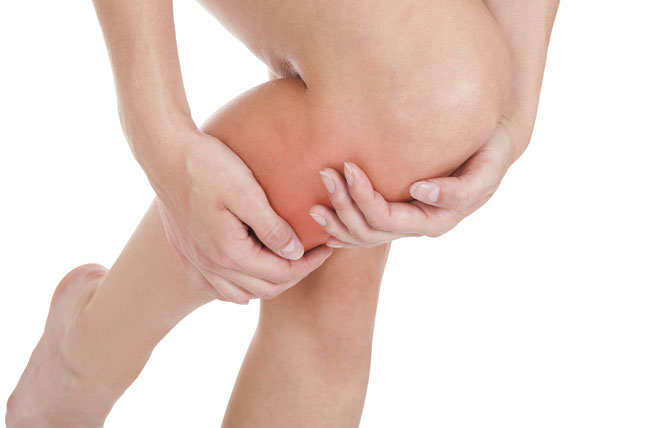Shin pain in athletes generally involves one or more of several pathological processes.
Bone Stress
A continuum of increased bone damage exists from bone strain to stress reaction and stress fracture.
Vascular Insufficiency
This includes a reduction in arterial flow or vascular outflow due to venous insufficiency, thrombotic disease or vascular collapse owing to elevated intracompartmental pressures.
Inflammation
Inflammation develops at the insertion of muscles, particularly the tibialis posterior and soleus, and fascia to the medial border of the tibia.
Raised Intracompartmental Pressure
The lower leg has a number of muscle compartments, each enveloped by a thick, inelastic fascia. As a result of overuse, these muscle compartments may become swollen and painful.
Nerve Entrapment
This can commonly occur with the superficial peroneal nerve. It is important to remember that 2 or 3 of these conditions may exist simultaneously.
Role of Biomechanics
Clinical experience suggests that abnormal biomechanics predisposes some individuals to pain on the anterior or medial border of the tibia (shin). Considered correction of such abnormalities through the use of orthotics can relieve any potential stress through the shin area.
Stress Fracture of the Tibia
Stress fractures are more commonly a cause of shin pain in athletes in impact, running and jumping sports. Overall limb and foot alignment as well as leg length discrepancy may also play a role. The incidence of stress fractures is increased by playing on more rigid, unforgiving surfaces and by a sudden increasse in training intensity or duration over a short time period. Approximately 90% of tibia stress fractures will affect the postero-medial aspect of the tibia, with the middle third and distal third being most common.
A classic case presentation for a routine postero-medial stress fracture is as follows :-
1. Gradual onset of leg pain aggravated by exercise.
2. Pain may occur with walking, at rest or even at night.
3. Examination – localised tenderness over the tibia.
4. Biomechanical examination may show a rigid, cavus foot incapable of absorbing load, an excessively pronating foot causing excessive muscle fatigue or a leg length discrepancy.
5. Tenderness to palpation along the medial border.
6. Bone scan and MRI scan appearances of a stress fracture.
7. A CT scan may also demonstrate a stress fracture.
Treatment
A classic treatment plan is as follows :-
1. Initial period of rest (occasionally non-weight bearing on crutches if necessary) until pain settles.
2. Wearing of a pneumatic brace extended to the knee.
3. If pain persists, continue to rest from sporting activity until bony tenderness disappears.
4. Once the patient is pain-free when walking and has no bony tenderness, gradually progress the quality and quantity of the exercise over the following month.
5. Cross-training with low-impact exercises, including swimming, cycling, deep water running, maintains conditioning and reduces risk of recurrence.
6. Soft tissue techniques by physiotherapist to any residual thickening at point of tenderness.
7. Electrotherapy modalities (interferential and ultrasound) can help to progress recovery.
Medial Tibial Traction Periostitis
This condition is more commonly termed “shin splints”.
The patient typically complains of diffuse pain along the medial border of the tibia, mid to lower third, which usually decreases with warming up. More focal pain should alert the examiner to the possibility of a stress fracture. The athlete can often complete the training session,but pain gradually recurs after exercise and is worse the following morning.
A number of factors may contribute to this condition. These include excessive pronation (flat feet), training errors, shoe design, surface type, muscle dysfunction, fatigue and decreased flexibility.
Excessive pronation due to pes planus or overuse combined with repetitive impact loading leads to chronic traction over its insertion onto the periosteum on the posterior medial border of the tibia, leading directly to medial tibial traction periostitis.
Treatment
The foundation of treatment is based on symptom-relief, identification of risk factors and treating the underlying pathology. Symptomatic treatment begins with rest, ice and anti-inflammatory medications. Switching to pain-free cross-training activities such as swimming or cycling can keep the athlete active.
In resistant cases, immobilisation in a protected weight-bearing boot may be necessary to rest the chronic tension placed on the soleus muscle insertion. Taping techniques are only effective if they control foot pronation.
Permanent relief can occasionally be achieved through appropriate shoe wear and the application of cushioned orthoses for shock absorption assistance, with a semi-rigid medial arch support, to support the pronated foot.
Electrotherapy modalities can help with pain-relief and accelerating the healing process. In resistant cases, surgical release at the insertion onto the posteromedial border of the tibia can be performed, with a projected success rate of 70% improvement in high-performance elite athletes.
Chronic Exertional Compartment Syndrome
This condition is defined as increased pressure within a closed fibro-osseous space, causing reduced blood flow, which subsequently leads to ischemic pain and possible permanent damage to the tissues of the compartment. This syndrome is frequently bilateral.
The exact cause of this condition remains unclear, although it is suggested to due to repetitive overuse, such as when running. The overlying fascia becomes stiffened across the muscle, and when the patient exercises, the muscle attempts to expand but is unable to do so. This results in increased pressure and then, pain.
Typical clinical features of chronic exertional compartment syndrome are the absence of pain at rest with increasing achy pain and a sensation of tightness with exertion.
Investigations and screening should always include an assessment of limb and foot alignment, a biomechanical analysis, demands of the patients sport, court surfaces and shoe wear, and the presence of other conditions such as medial tibial traction periostitis and/or stress fractures.
Surgical Treatment of Exertional Compartment Syndrome
Fasciotomy is the standard surgical treatment for anterior and deep posterior compartment syndromes. The majority (80-90%) of patients undergoing this procedure have a satisfactory result, with most being able to return to their previous level of sport. However, a significant percentage of patients either fail to improve after surgery or after a period of improvement have a recurrence of symptoms.
Rehabilitation following Compartment Syndrome Surgery
The following protocol is recommended :-
1. Perioperative antibiotics and cryotherapy to reduce complications of infection, haematoma and cellulitis.
2. Range of motion exercises of the knee and ankle in the immediate post-operative period.
3. Three to five days of limited weight-bearing on crutches, then full weight-bearing as tolerated.
4. Once the wounds have healed, a strengthening programme including cycling and swimming should commence.
5. Gradual return to light jogging at about 4-6 weeks after surgery.
6. Full sports participation is anticipated at 6-8 weeks if one compartment is released and 8-12 weeks if both legs and multiple compartments are released.
7. The athlete should be pain-free with 90% strength regained prior to full sports participation.

